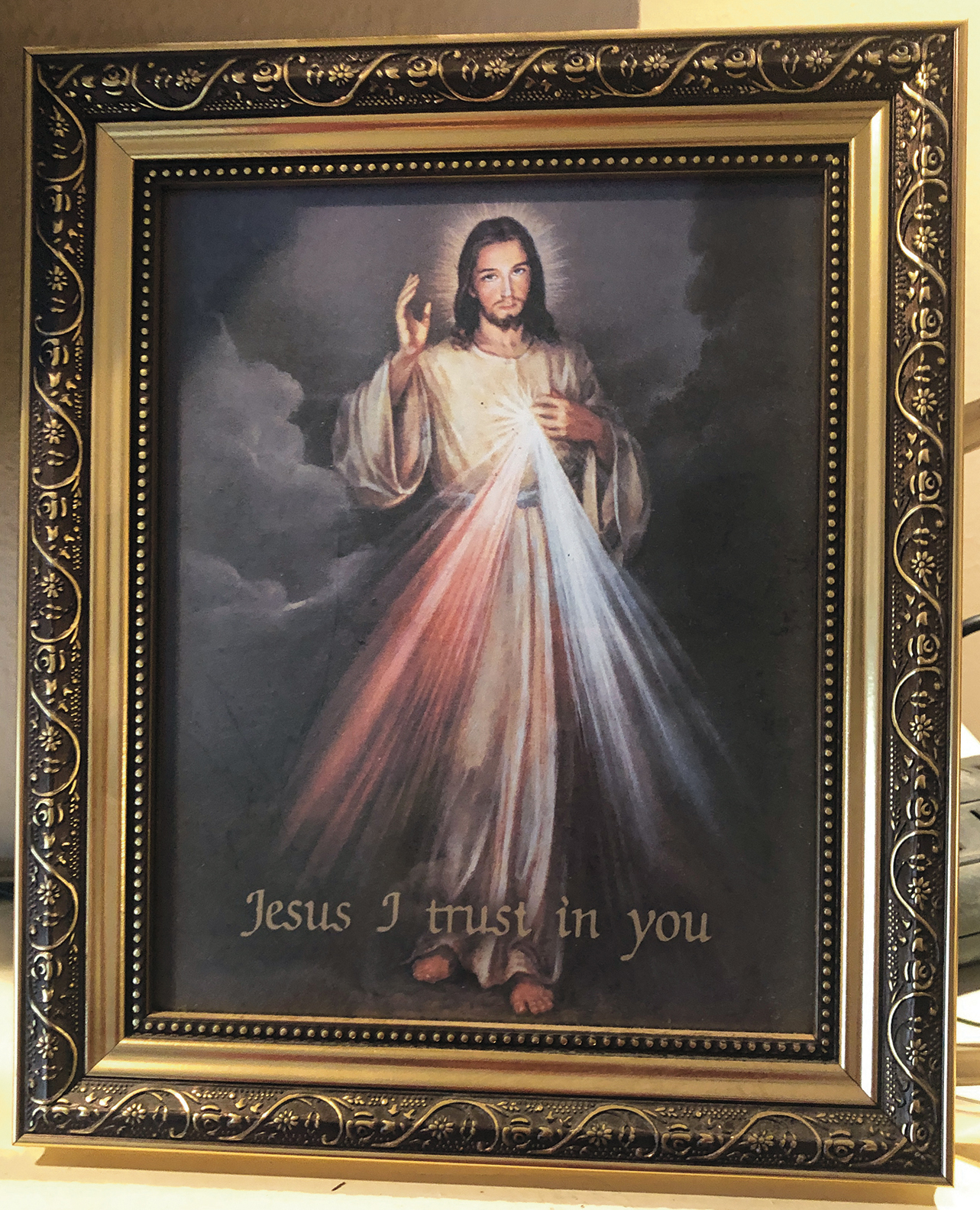Jesus I trust in you
April 17, 2020

 By Kelly Mescher Collins
By Kelly Mescher Collins
Back in early, cold and snowy January (long before most people took the word “pandemic” too seriously) I felt compelled to write a column on St. Faustina and the Divine Mercy image for the April edition of
The Catholic Mirror to correspond with Divine Mercy Sunday on April 19.
Though still four months away, I wanted to commit to this column. I made sure my editor knew about it in January so she could reserve space – an unusual move, for sure.
But oh, how the world would change in just a few short months. In January, who would have predicted that we’d soon be faced with a suspension of all public Masses, parish gatherings and yes – even this year’s Divine Mercy celebration.
And as we all know, it doesn’t stop there – schools closed, sporting events, proms and graduations cancelled. The state has prohibited gatherings of more than 10 people – even for weddings and funerals. The governor ordered almost all businesses closed and new unemployment claims in Iowa have reached a record high.
I certainly couldn’t have imagined what would transpire.
And now, given the trying the times we live in, perhaps people are thirsting for a message such as this.
Providential? Maybe. Coincidence? Unlikely.
I’m often surprised by the number of Catholics unaware of St. Faustina and the Divine Mercy image. Here’s a brief recap of what happened nearly 90 years ago in Poland.
On Feb. 22, 1931, Jesus revealed himself to St. Faustina for the first time in her cell at a convent in Poland. Jesus was wearing a white garment with red and pale rays emanating from his heart.
As written in Diary of Saint Maria Faustina Kowalska: Divine Mercy in My Soul, Jesus told her: “You are the secretary of my mercy. I have chosen you for that office in this life and the next life.”
“Your task is to write down everything that I make known to you about my mercy, for the benefit of those who by reading these things will be comforted in their souls and will have the courage to approach me,” he told her.
Jesus ordered her to have an image painted.
“Paint an image according to the pattern you see, with the signature: ‘Jesus, I trust in You.’ I desire that this image be venerated, first in your chapel, and then throughout the whole world. I promise that the soul that venerates this image will not perish. I also promise victory over its enemies already here on Earth, especially at the hour of death.”
Now, here’s the part where Jesus’ message gets really interesting. Because if you’re anything like me, you may sometimes struggle with surrendering to God’s will and fully trusting him. But this is where Jesus can work the most.
“The graces of my mercy are drawn by means of one vessel only, and that is – trust,” Jesus said, according to the diary. “The more a soul trusts, the more it will receive. Souls that trust boundlessly are a great comfort to me, because I pour all the treasures of my graces into them. I rejoice that they ask for much, because it is my desire to give much, very much. On the other hand, I am sad when souls ask for little, when they narrow their hearts.”
After learning of this message, I decided then and there that I needed this image in my home and at my desk at work – not as a good luck charm, but as a reminder throughout my day that Jesus is the beginning and the end, the ultimate goal. If I want to deepen my relationship with Jesus, then I need to trust him. And there’s nothing I want more than the deepest relationship possible with Jesus.
When life gets crazy and I start contemplating worst-case scenarios, I stop, turn to this image and silently say to him, “Jesus, I trust in you.” When I’m extremely stressed, I repeat it over and over. And on a really bad day, I feel like I’m faking it until I make it. But since I trust Jesus, I trust that he appreciates my effort – even when it’s extremely hard to stop worrying and let go.
Trusting Jesus brings me peace and joy. And I want that. Jesus wants that. Who doesn’t want that?
Jesus said to St. Faustina: “I seek and desire souls like yours but they are few. Your great trust in me forces me to continuously grant you graces.”
That first sentence in Jesus’ statement makes me sad. But it also makes me to want to be better at trusting him.
Jesus told St. Faustina he wanted a day dedicated to his mercy.
“I want this image, which you will paint with a brush, to be solemnly blessed on the first Sunday after Easter; that Sunday is to be the Feast of Mercy. I desire that priests proclaim this great mercy of mine towards the souls of sinners.”
Thanks to fellow Polish native, St. John Paul II, St. Faustina was canonized on April 30, 2000. On that same day, he established Divine Mercy Sunday – a feast day for the Catholic Church – falling on the octave Sunday of Easter each year.
“This is the happiest day of my life,” St. John Paul II said.
The Holy Father died April 2, 2005 – the eve of Divine Mercy Sunday.
Coincidence? Unlikely. Providential? I trust so.
Join Bishop Joensen and the Diocese of Des Moines for Divine Mercy prayer opportunities this weekend, April 18 and 19, as we pray for the end to COVID-19. Find the full schedule of online opportunities at dmdiocese.org/coronavirus.
Kelly Mescher Collins is multimedia journalist at the Diocese of Des Moines and a member of St. Francis Parish in West Des Moines. She encourages you to find a Divine Mercy image (similar to the one above that’s on her mantle) and display it in your own home.